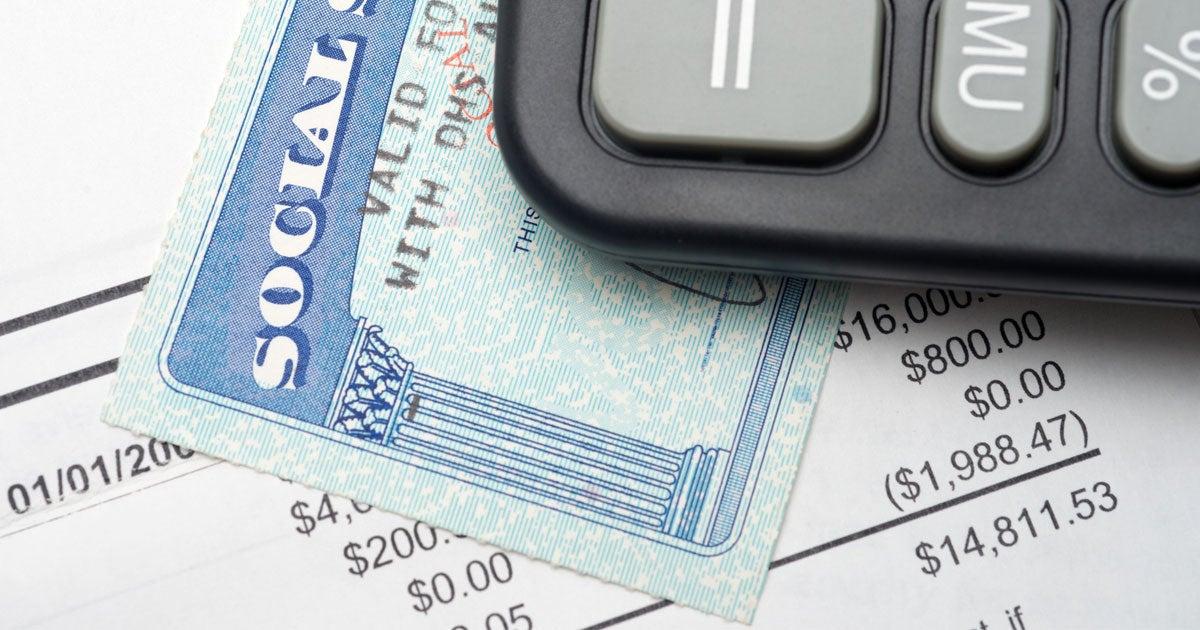How Do You Apply for Social Security Disability Insurance (SSDI)?
7 min read

Related Topics
Monthly Social Security Disability Insurance (SSDI) benefits are available to people who qualify. But unfortunately, many who may be eligible do not apply because they are concerned the application process will be too complicated.
“They think they’re not savvy enough, or it’s too difficult,” says Jen Teague, NCOA Director for Health Coverage and Benefits. “But you can do it. You just need the right information.”
What do you need and how can you get started? Here is a step-by-step look at what you should know about applying for SSDI benefits.
What is Social Security Disability Insurance (SSDI)?
SSDI is a monthly benefit for people between the ages of 19 and full retirement age (FRA) who have a medical condition that meets a strict definition of disability. Applicants must also have worked long enough in jobs covered by Social Security to qualify.
What is a disability under SSDI?
To qualify for SSDI benefits, you must have a serious medical condition that:1
- Prevents you from engaging in work or other substantial gainful activity
- Prevents you from doing the work you used to do
- Prevents you from adjusting to a new type of work
- Is likely to last at least a year or to result in death
You can learn more about Social Security Administration (SSA) disability requirements in our articles, A Guide to Social Security Disability Insurance Benefits and Who Is Eligible for SSDI? You can also check your eligibility using the SSA’s Benefit Eligibility Screening Tool (BEST).
If I think I qualify for SSDI, what should I do next?
You can get ready to apply by downloading the SSA’s printable Adult Disability Starter Kit. It contains a short FAQ about applying for SSDI benefits, a medical and job worksheet, and a checklist of the information you’ll want to have on hand when you fill out your SSDI application.
The information may vary based on your circumstances. The SSA organizes the types of items you needed into three categories. Here’s what’s on the starter kit’s checklist:2
1. Information about you
- Your date and place of birth, and Social Security number
- The name, Social Security number, and date of birth or age of your spouse and any former spouse(s)
- The dates and places of marriage and dates of divorce or death (if applicable)
- The name, address, and phone number of two people (not health care providers) who know about your medical condition and can help you with your claim
- Worker’s compensation or other disability benefit information, if applicable, including the settlement agreement, date of injury, and claim number for any workers’ compensation claim, and the source and payment amounts for any disability benefits
- A checking or savings account number, including the Routing Transit Number, for depositing SSDI payments
2. Information about your medical condition
- Records you have that are related to your medical conditions (ask your health care providers for any medical records that you do not have)
- Names, addresses, and phone numbers of health care providers who examined you or treated your medical condition(s)—so the SSA can request your medical records.
- List of medicine(s) you take and why you take them (for prescription medications, include the names of the health care providers who prescribed them)
- Names and dates of medical tests you’ve had related to your medical condition, and who ordered them
Many applicants think completing the medical portion will be too difficult. But it doesn’t need to be, Teague says.
To help simplify the process, he suggests conducting a very specific Google search to find the SSA’s disability requirements for your disease or medical condition. An example of a search might be, “What information do I need to give SSA for a cancer diagnosis?” Your results should include a link to a page that provides the medical criteria you’ll need for your SSDI application.
“You'll find the checklist that you can take to your doctor, and they'll give you what you need to help you complete that particular application,” Teague says. “If people knew that those checklists were out there, there would probably be more successful disability applications.”
Depending on your disease or medical condition, you’ll get a link to resources that include:
- The SSA’s Compassionate Allowances webpage. There, you’ll find a list of some of the more serious disabling medical conditions. Search the list of conditions and click on the one that applies to you. You’ll arrive at a page with a list of the information the SSA requires. Here is an example: breast cancer. You can print it and take it to your doctor.
You can also bypass a Google search and visit the site directly.
- A Disability Evaluation Under Social Security webpage. This section of the SSA website lists all conditions that may qualify you for SSDI benefits. Here’s an example: A search for “what information do I need to give SSA for an immune system disorder diagnosis?” produces this result: 14.00 Immune System Disorders – Adult. (Make sure to choose the search result for adults, not children.)
These entries can be lengthy, but don’t let that keep you from sharing the one that applies to you with your doctor. “This shows what the SSA is looking for to qualify,” Teague says.
You can visit this site directly, too, and search for your medical condition.
3. Information about your job, education, and training
- A list of the jobs you’ve had in the last 15 years. Include self-employment and jobs in a foreign country. Provide the dates (month and year) you worked these jobs if you have that information, and how many hours on average you worked per day or week and how much you earned.
- Information about your highest level of education completed, and when and where you completed it. If you received special education (for mental, physical, emotional or behavioral conditions), include where and when.
- A list of specialized job, trade, or vocational training and dates completed.
Will I need to provide documents for my SSDI application?
Yes, you will need to supply some or all of the following:3
- Birth certificate or other proof of birth
- Proof of U.S. citizenship or lawful alien status if you were not born in the United States
- U.S. military discharge paper(s) if you had military service before 1968
- W-2 form(s) or self-employment tax returns for the prior year
- Medical evidence already in your possession, including medical records, doctors’ reports, and recent test results.
- Award letters, pay stubs, settlement agreements or other proof of any temporary or permanent workers’ compensation-type benefits you received
Where do I apply for SSDI?
You can apply for SSDI benefits online, via telephone, or at your local Social Security office. You can schedule a telephone appointment or an in-office appointment by calling the SSA at 1-800-772-1213 (TTY 1-800-325-0778), from 8 a.m. to 7 p.m., Monday through Friday. The SSA offers free interpreter service in more than 200 languages.4
Is it better to apply for SSDI benefits online?
The best way to apply for SSDI benefits is by choosing the option you’re most comfortable with. But you may be able to complete the SSDI application more quickly if you do it online. It also may be more convenient since you can save your work and come back to it later.
How long does it take to complete the SSDI application?
It will take at least one hour, the SSA says, whether you apply online, by telephone or in person.4
Can I get help applying for SSDI?
A Social Security representative will help you apply for benefits by telephone or in person. You can also get help from a friend, relative, or another person you trust.5
When should I apply for SSDI?
The SSA says you should apply for SSDI benefits as soon as you develop a disability. It can take three to six months to get a decision.3 You can check your SSDI application status online or by calling the SSA.
“Do not delay applying for benefits because you do not have all the documents. We will help you get them,” the SSA says.3
NCOA’s Teague also urges older adults who are eligible to get started applying for SSDI as soon as possible.
“If you fit the criteria, you can get disability,” he says. “Just don’t be afraid to apply for it.”
Sources
1. Social Security Administration. Disability Benefits | How You Qualify. Found on the internet at https://www.ssa.gov/benefits/disability/qualify.html
2. Social Security Administration. Adult Disability Starter Kit. Found on the internet at https://www.ssa.gov/disability/Documents/Adult%20Disability%20Starter%20Kit%20Checklist.pdf
3. Social Security Administration. Disability Benefits. Found on the internet at https://www.ssa.gov/benefits/disability/
4. Social Security Administration. Fact Sheet: What You Should Know Before You Apply for Social Security Disability Benefits. Found on the internet at https://www.ssa.gov/disability/Documents/Adult%20Disability%20Starter%20Kit%20Fact%20Sheet.pdf
5. Social Security Administration. Helping Someone Apply Online. Found on the internet at https://www.ssa.gov/benefits/retirement/planner/thirdparty.html




